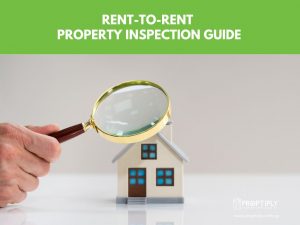
Inspecting a property in a rent-to-rent model for your co-living business is an important step. Thoroughly assessing the condition of the property will ensure that it is suitable for subletting it out to tenants. Here’s what you need to do.
1. Plan ahead
Schedule your appointment for viewing with the property owner or landlord and create a checklist of items to inspect during the property visit.
2. Safety check
Assess the safety of the property. Things to look out for are hazards such as exposed wiring, loose handrails or other tripping hazards.
3. Structural condition
Inspect the structural integrity of the property. Look for signs of water damage or cracks in the walls or ceilings.
4. Check the functionality
Test the functionality of key systems and appliances such as lighting, air conditioning, plumbing and kitchen appliances. Make note of any issues or needed repairs.
5. Document existing damage
Document any existing damage or wear and tear in the property. Take clear photos and notes so that there is a record the property’s condition at the time of investment. This will prevent future disputes.
6. Room-by-room inspection
Go through each bedroom thoroughly. Check for issues such as peeling paint, damaged flooring, broken fixtures or malfunctioning locks.
7. Kitchen bathroom evaluation
Pay special attention to the kitchen and bathroom areas. Inspect sinks, faucets, toilets, showers and appliances. Look out for signs of leaks, water damage, or mold and mildew.
8. Ask questions
Don’t hesitate to ask the property owner questions which you have during inspection. Take this opportunity to clarify any doubts you have.
9. Take notes and photos
Throughout the inspection, take detailed notes and photos for documentation. This will be a useful reference in the future.
10. Review lease terms and follow up
If you haven’t already reviewed the terms of the lease or sub-lease agreement, take this opportunity to do it and clarify and terms with the property owner or landlord. After the inspection, follow up to discuss any concerns, ensure that repairs are being fixed and negotiate the lease terms before you proceed with the rent-to-rent arrangement.
Being thorough and methodical during inspection will protect your interests and ensure that your property is suitable for the rent-to-rent co-living model.